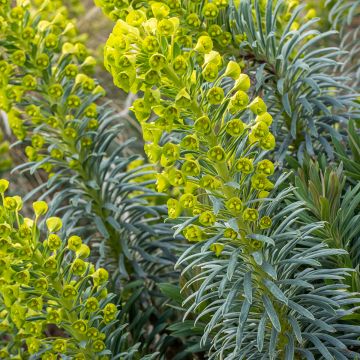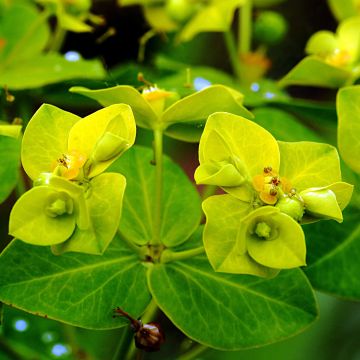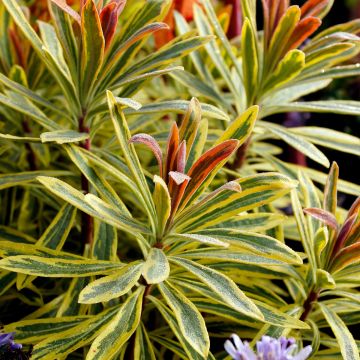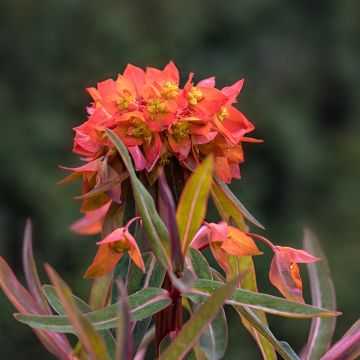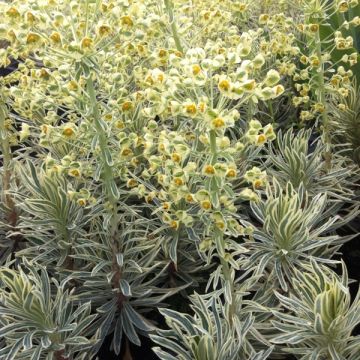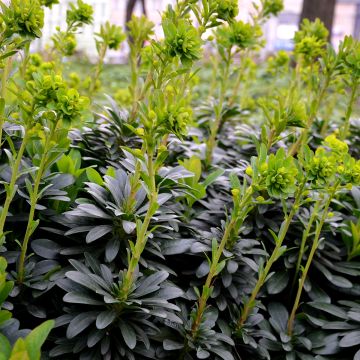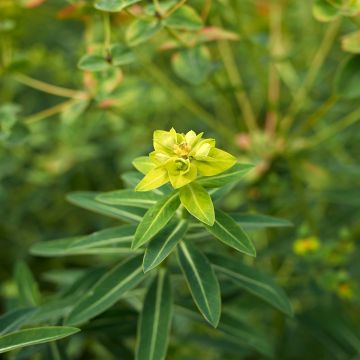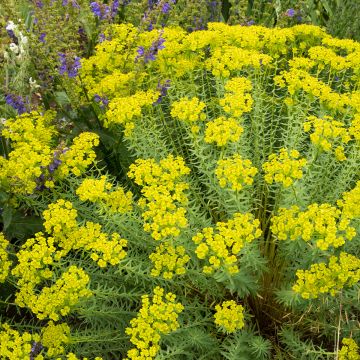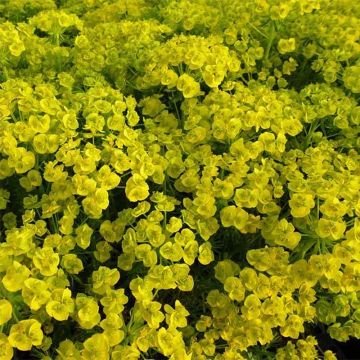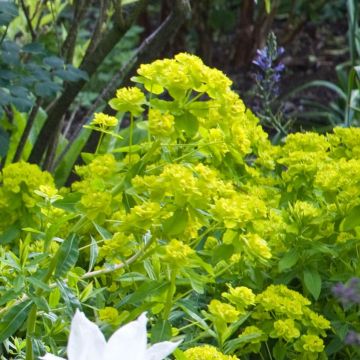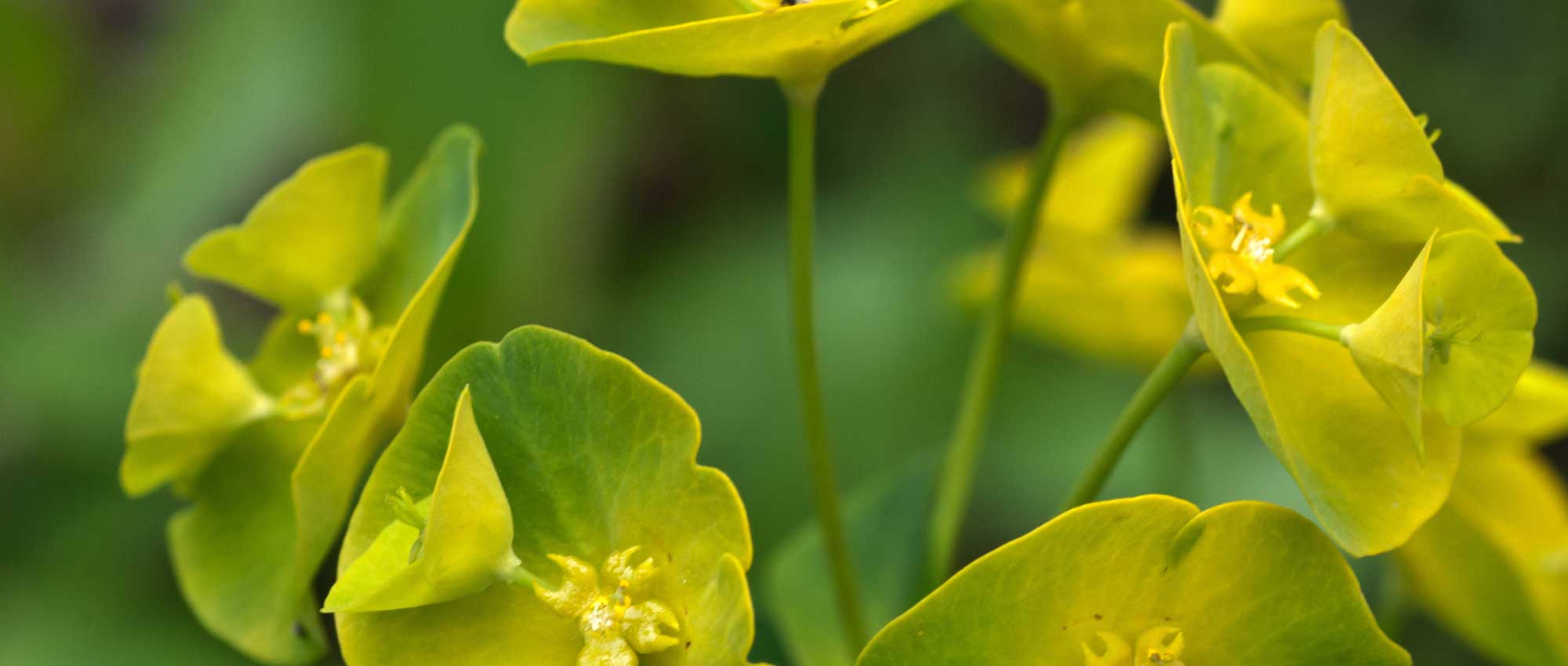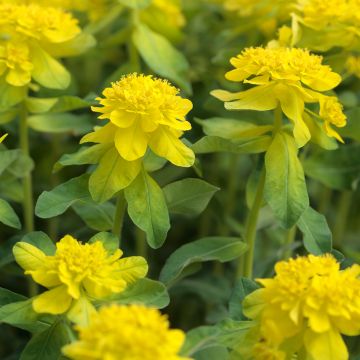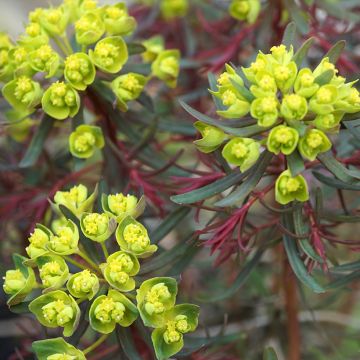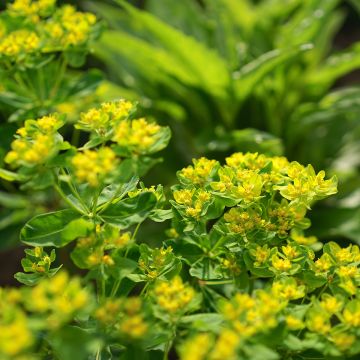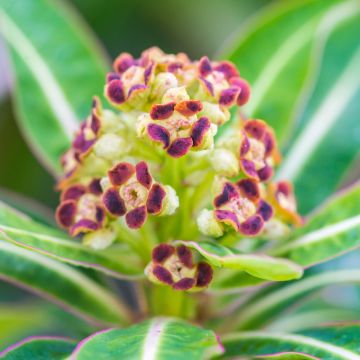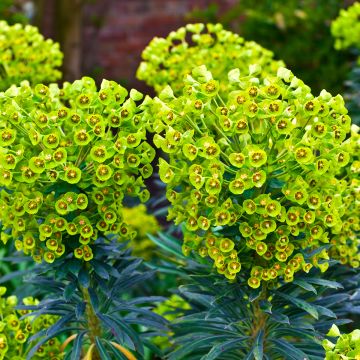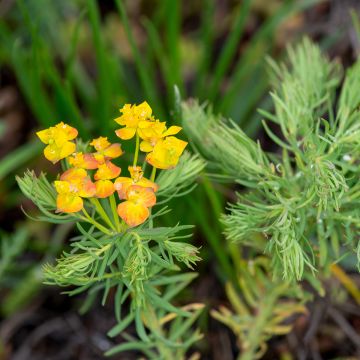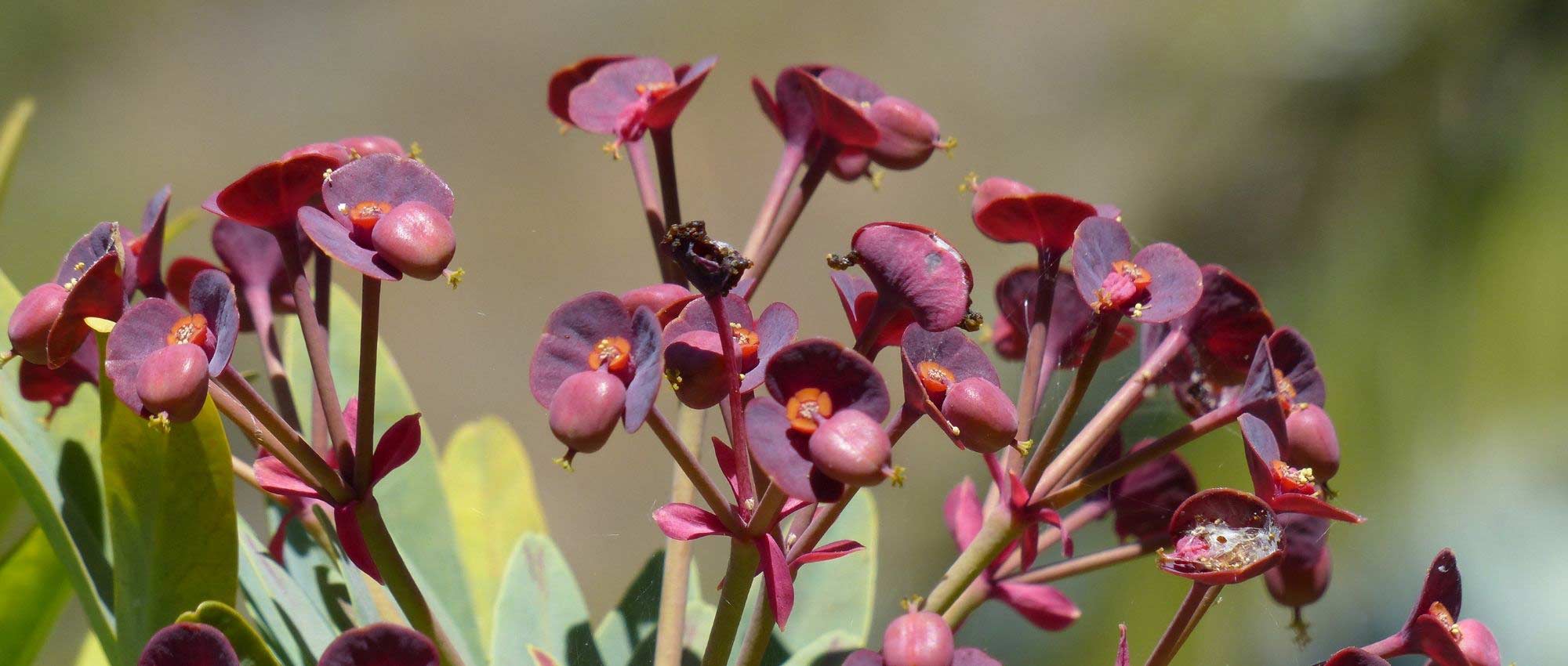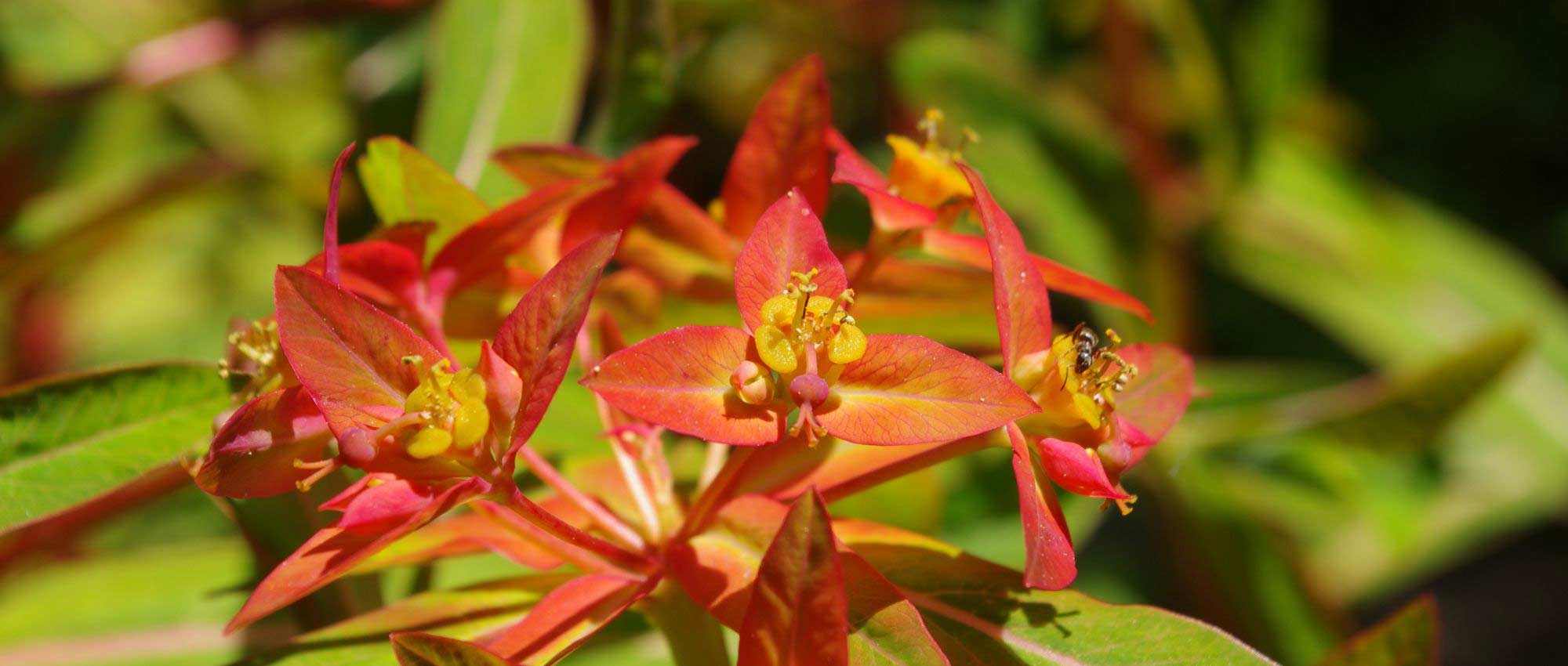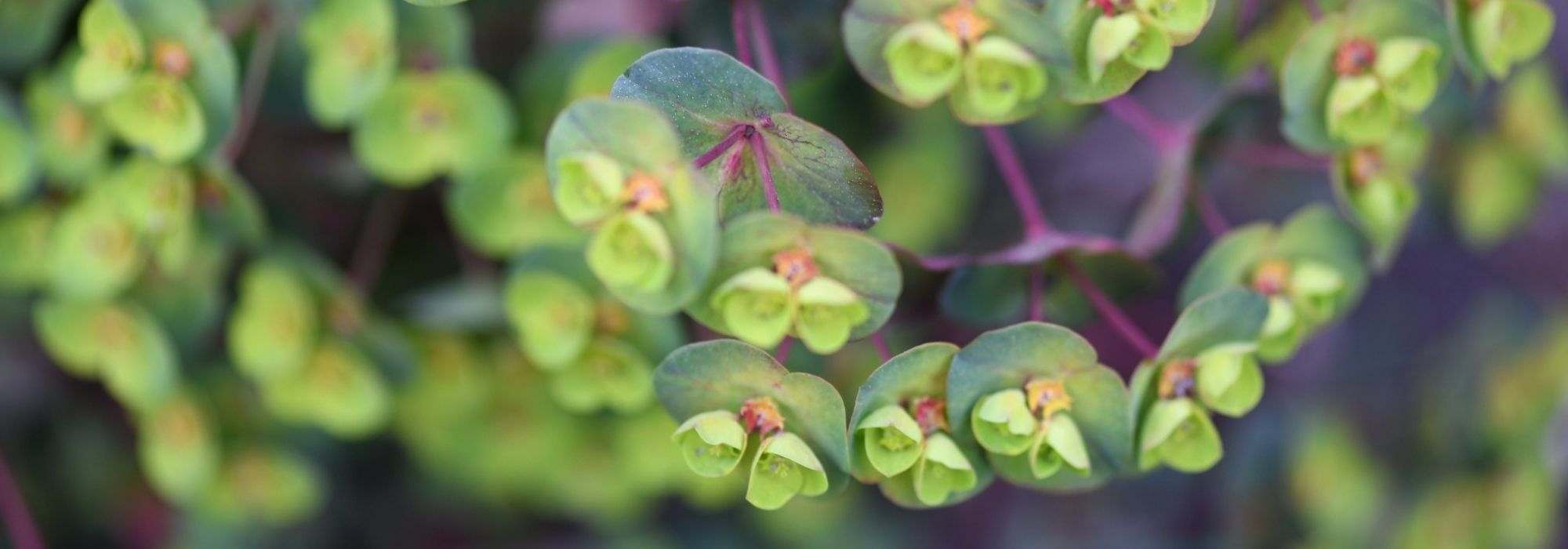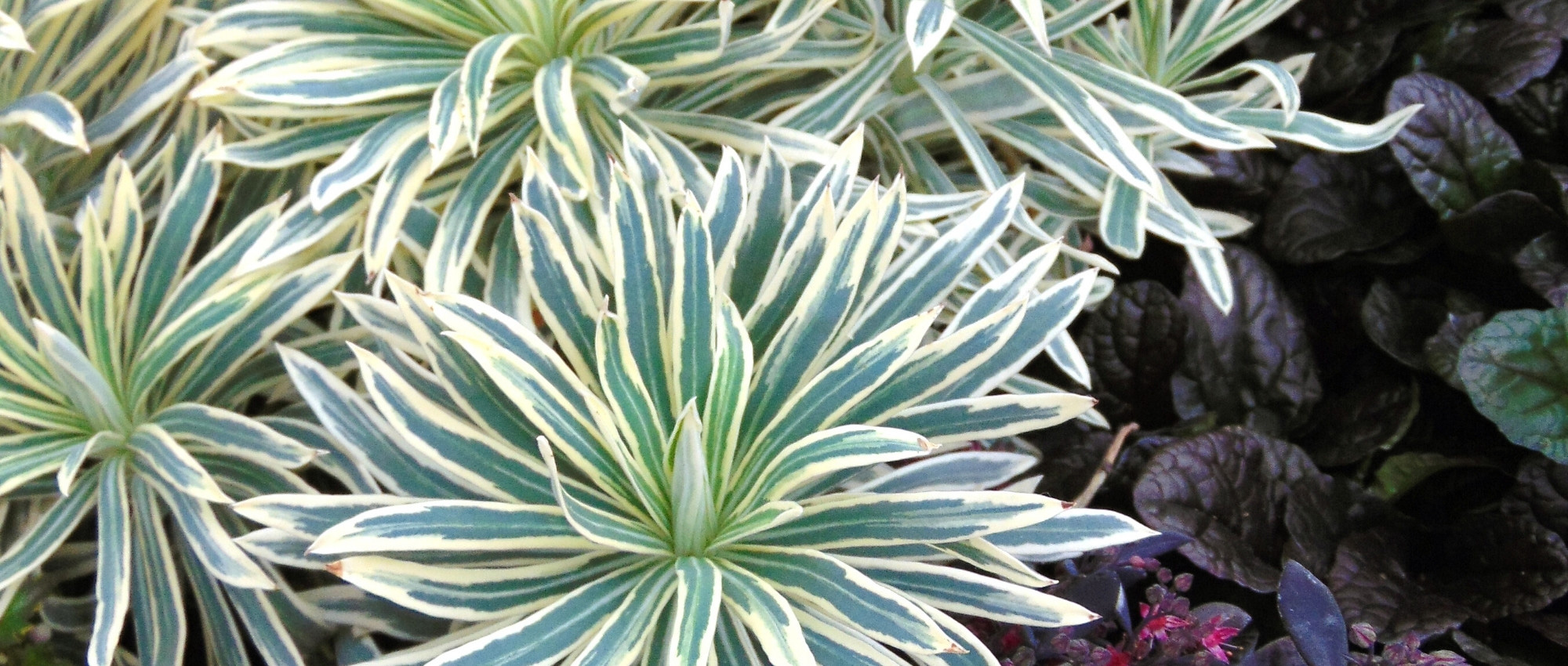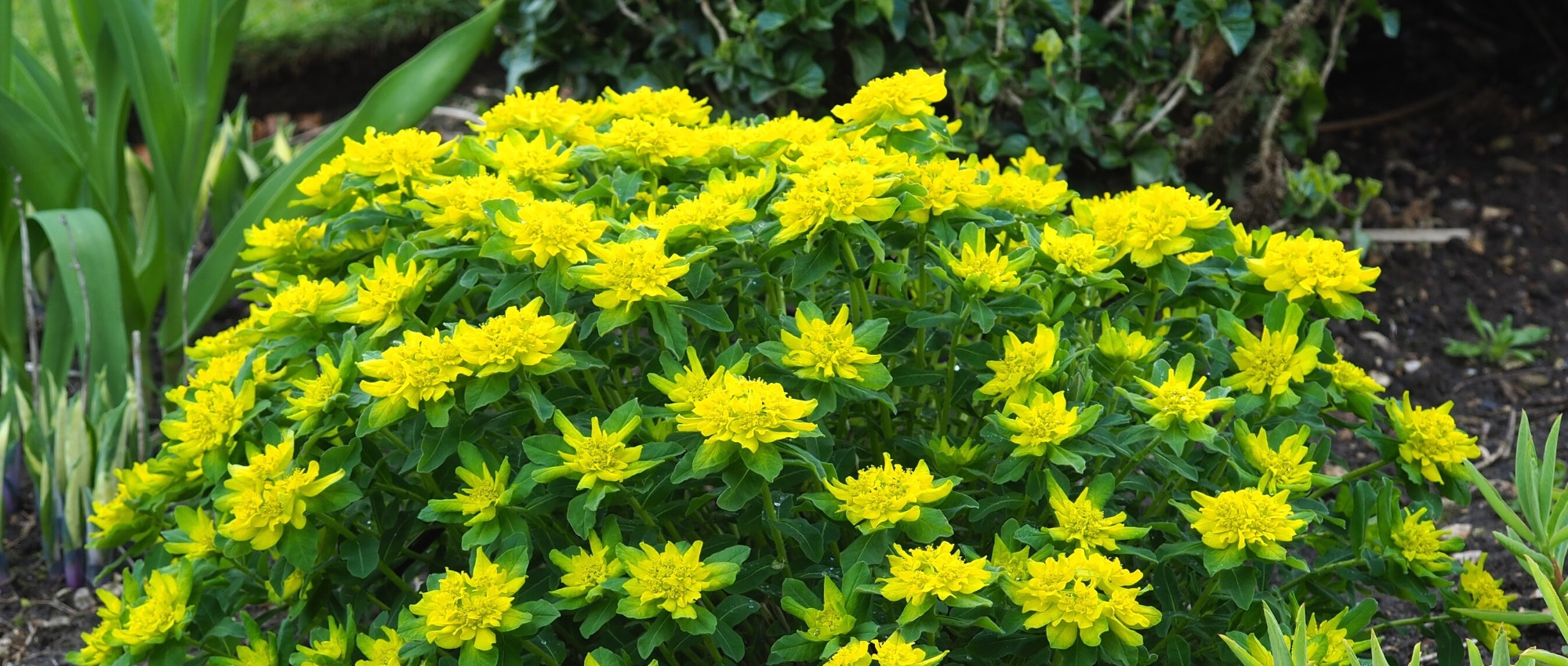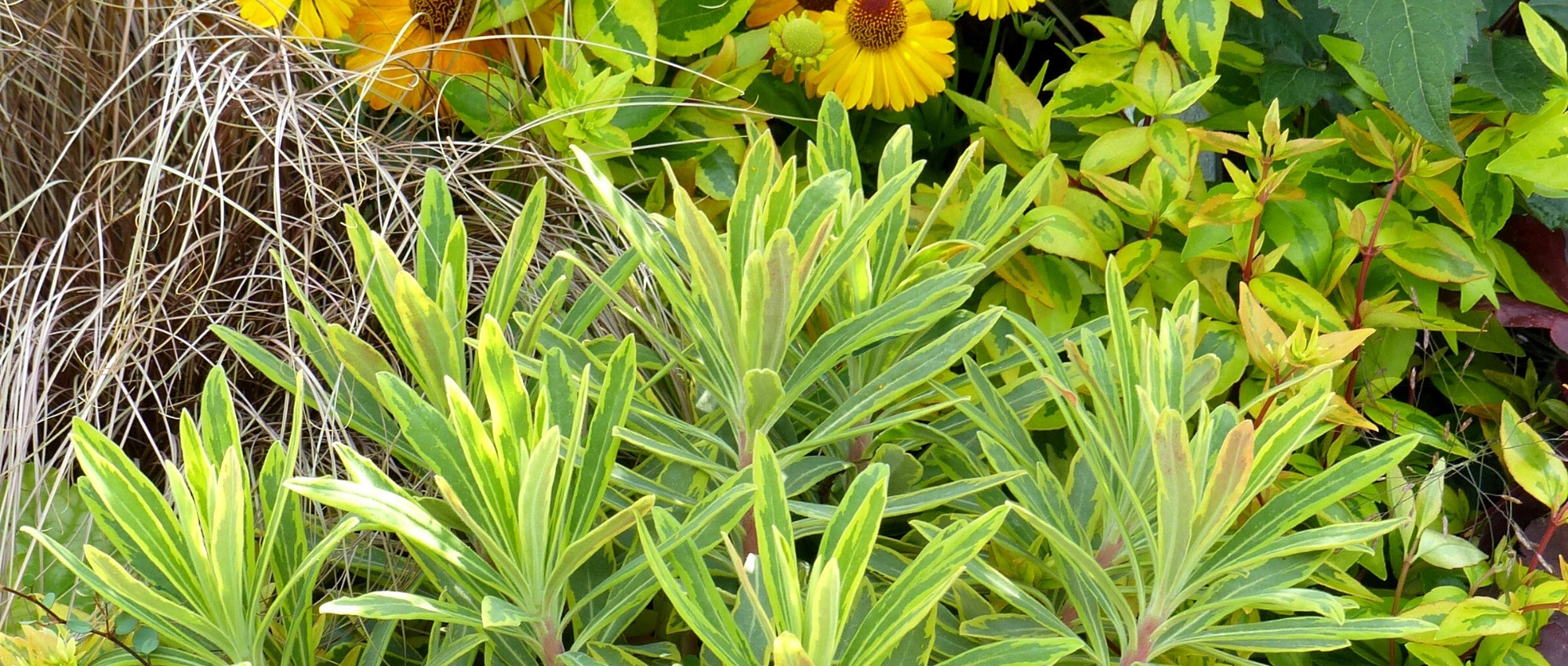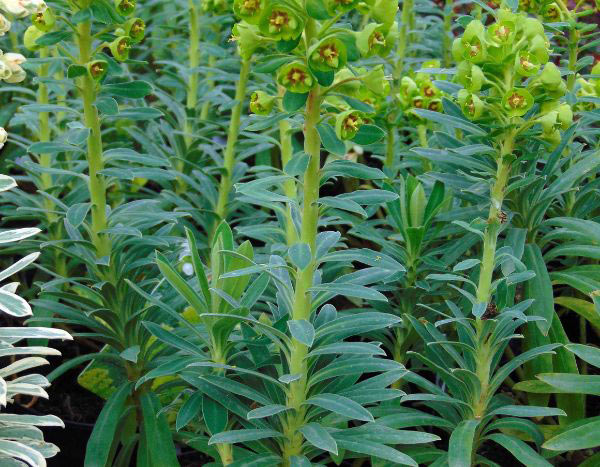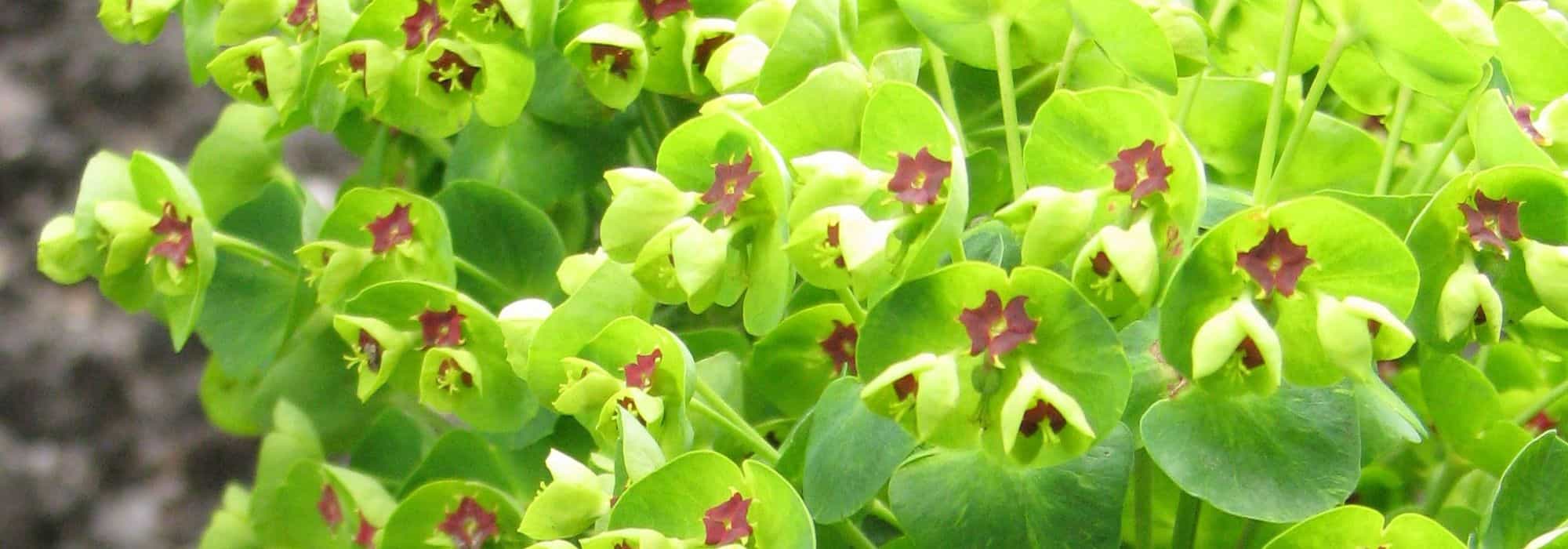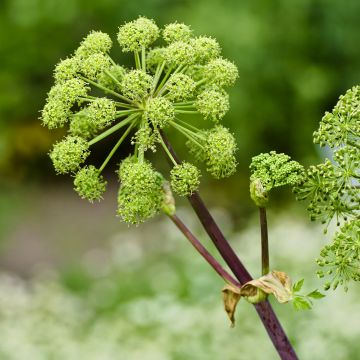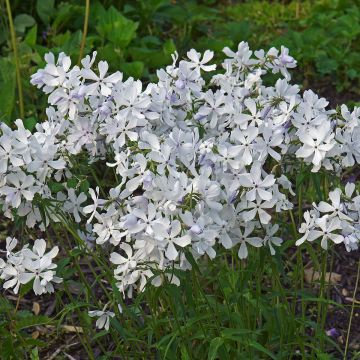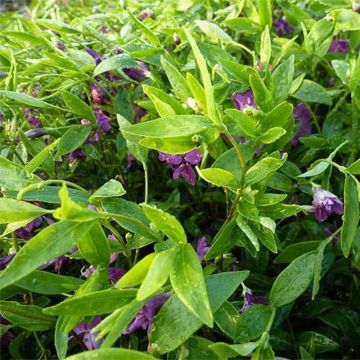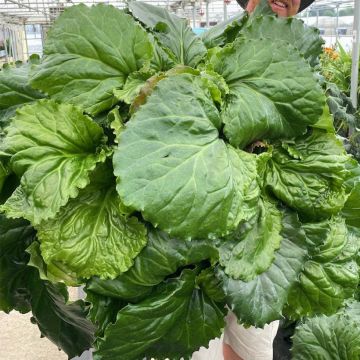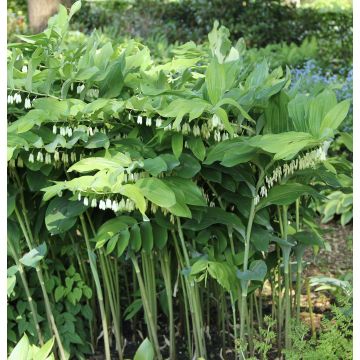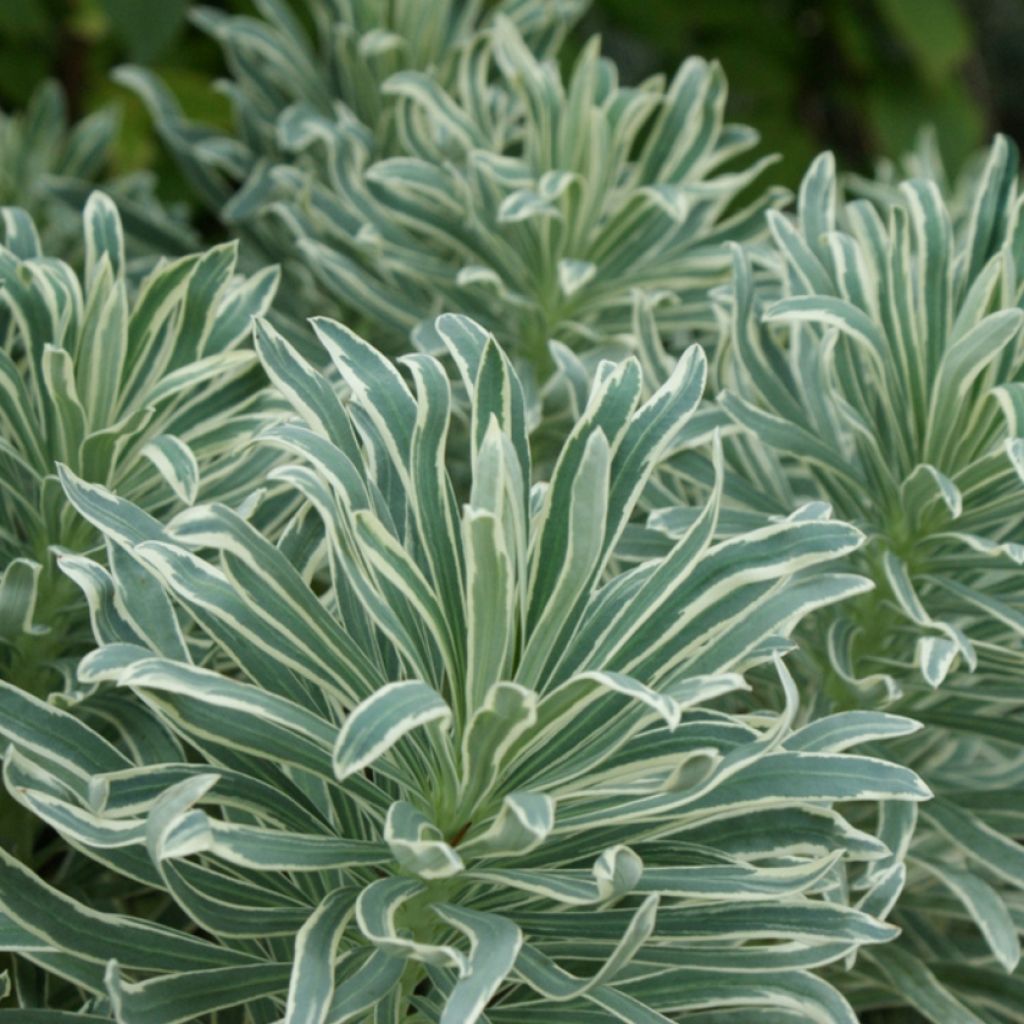

Euphorbia characias Glacier Blue - Spurge
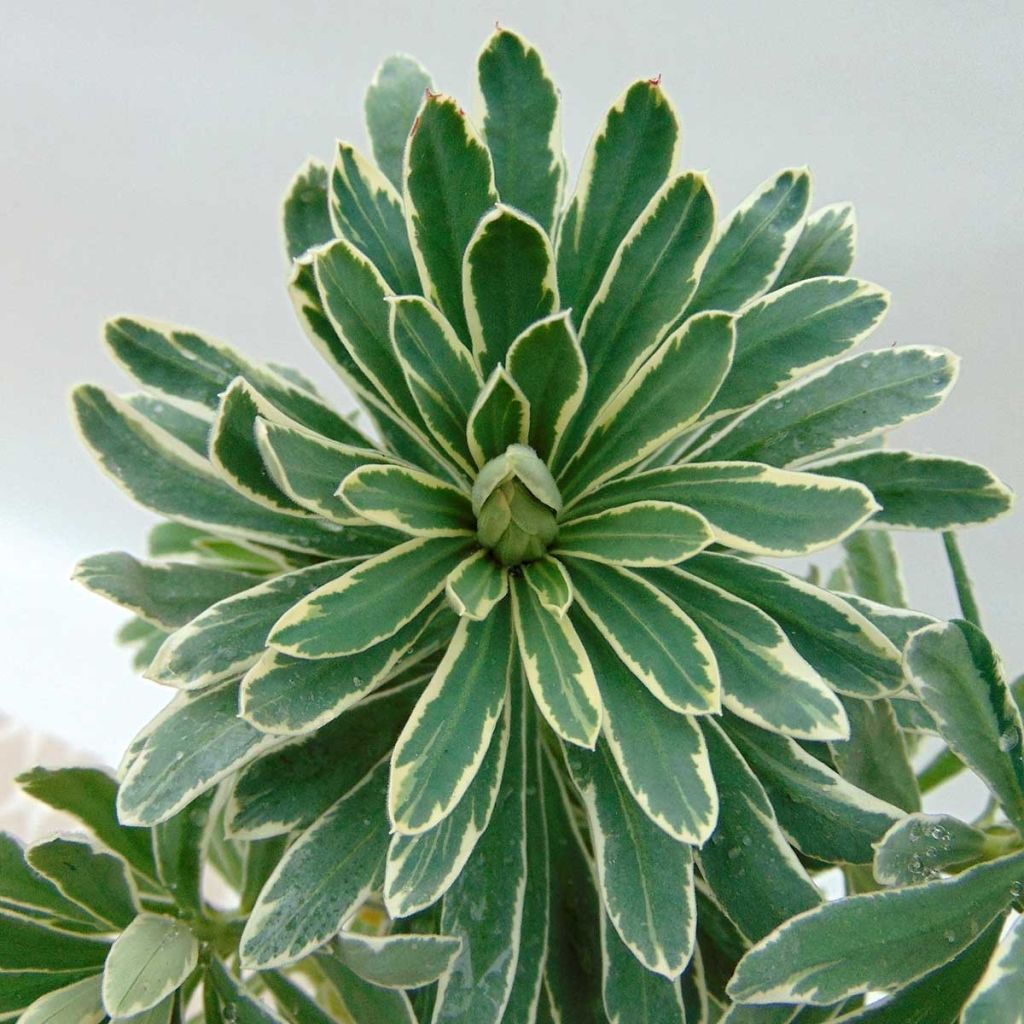

Euphorbia characias Glacier Blue - Spurge
Euphorbia characias Glacier Blue - Spurge
Euphorbia characias Glacier Blue
Mediterranean Spurge, Evergreen Spurge
Plant that develops slowly but well.
Nath44, 27/05/2025
Special offer!
Receive a €20 voucher for any order over €90 (excluding delivery costs, credit notes, and plastic-free options)!
1- Add your favorite plants to your cart.
2- Once you have reached €90, confirm your order (you can even choose the delivery date!).
3- As soon as your order is shipped, you will receive an email containing your voucher code, valid for 3 months (90 days).
Your voucher is unique and can only be used once, for any order with a minimum value of €20, excluding delivery costs.
Can be combined with other current offers, non-divisible and non-refundable.
Why not try an alternative variety in stock?
View all →This plant carries a 12 months recovery warranty
More information
We guarantee the quality of our plants for a full growing cycle, and will replace at our expense any plant that fails to recover under normal climatic and planting conditions.

Does this plant fit my garden?
Set up your Plantfit profile →
Description
Euphorbia characias 'Glacier Blue' has a compact bushy habit, with bright evergreen blue-green foliage edged in creamy white. From April to May, it produces a dense mass of flowers with cream bracts and green eyes. Its variegated foliage with silver reflections will give the garden a touch of the Mediterranean Sea.
Euphorbia characias is a shrubby Euphorbia, commonly known as Mediterranean Spurge or Garrigue Spurge, belonging to the Euphorbiaceae family. It is native to Mediterranean regions, from Portugal and western Morocco to Turkey. 'Glacier Blue', derived from the 'Tasmanian Tiger' variety, forms a vigorous undershrub with a woody stump, sporting a dense and ramified bushy tuft. Its habit is erect and very compact. Of medium size, it measures 60 to 70cm (24 to 28in) in height with a 50cm (20in) spread. It has splendid variegated evergreen foliage, composed of narrow linear leaves, with a bluish-green colour. Throughout the year, it will display fascinating colours, initially tinted with bluish-green and silver-grey in summer, then blue-green, silver-grey, and ivory in autumn, and finally grey-green, dark green, burgundy, and ivory in winter, widely marginated with creamy white. From March to June, it offers a long flowering period with cream bracts and green eyes, beautifully contrasting with the variegated foliage.
Euphorbias contain a latex which is highly toxic when ingested. This sap is also incredibly irritating to the skin. It is therefore advisable to use gloves, especially when cutting deflowered stems.
Euphorbia characias, with its exotic appearance, brings a Mediterranean touch to the garden. Its blue-green foliage edged in cream and its green and white flowering are incredibly decorative. Due to its modest size, 'Glacier Blue' will have a beautiful effect when integrated into sunny flower beds and borders, but can also be planted alone or in a rock garden. It will be the perfect companion for Mediterranean shrubs and plants, grasses, and spring bulbs. It adapts very well to container or pot cultivation on a patio or balcony. It requires well-drained and sunny soil. For container cultivation, place a thick layer of drainage material, such as clay balls or gravel, at the bottom of the pot, and use light and fertile soil. It is advisable to raise the pot during the winter period, placing it on "feet" to promote drainage.
Its beautiful stems can be cut to create stunningly colourful bouquets.
Euphorbia characias Glacier Blue - Spurge in pictures
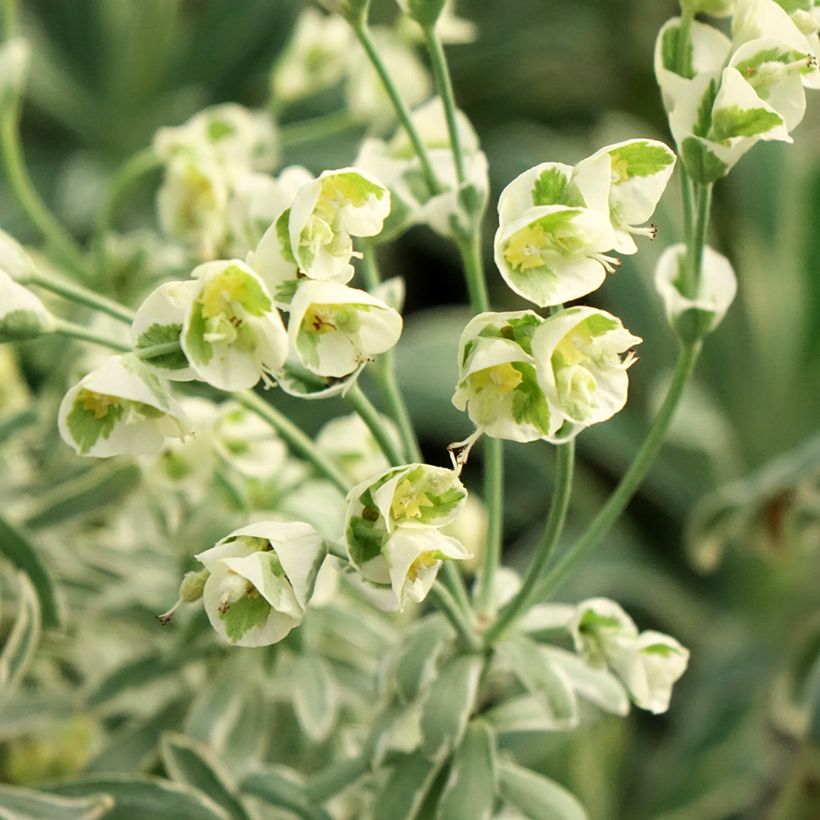

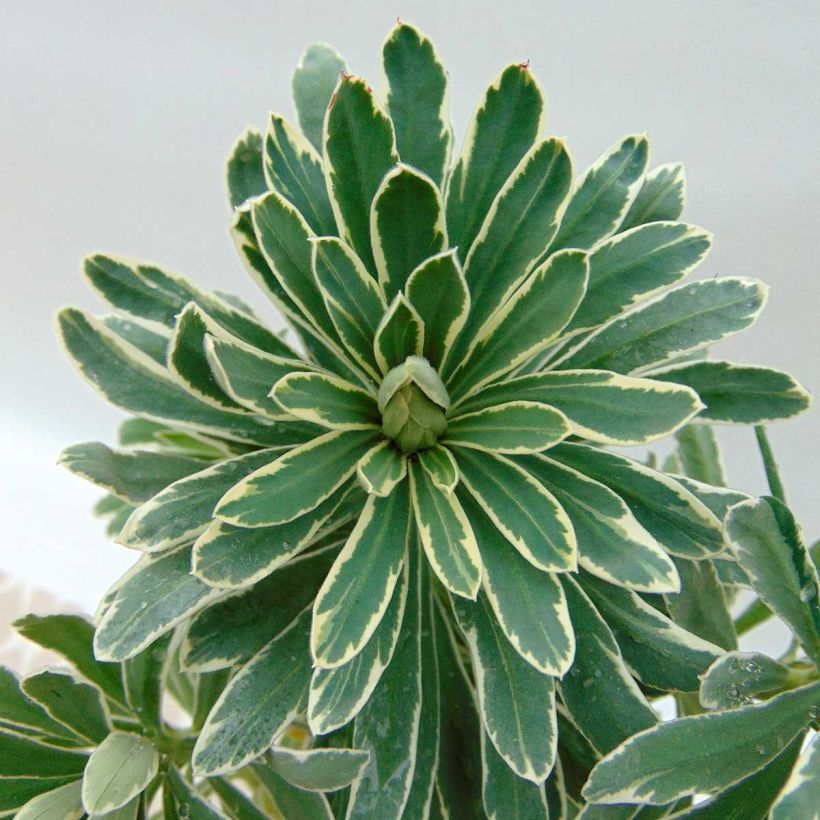

Flowering
Foliage
Plant habit
Safety measures
Botanical data
Euphorbia
characias
Glacier Blue
Euphorbiacées
Mediterranean Spurge, Evergreen Spurge
Mediterranean
atteintescutaneomuqueuses
Cette plante peut provoquer l'apparition de réactions cutanées indésirables, une atteinte des yeux, ou des difficultés respiratoires si elle est ingérée.
Ne la plantez pas là où de jeunes enfants peuvent évoluer. Evitez tout contact avec la peau: privilégiez l'emploi de gants pour la manipuler. En cas de contact, lavez-vous soigneusement les mains et rincez abondamment à l'eau la zone concernée. Lavez les vêtements entrés en contact. En cas de réaction cutanée, contactez votre médecin ou le centre antipoison le plus proche de chez vous. En cas d'atteinte étendue ou de difficultés respiratoires, appelez immédiatement le 15 ou le 112.Pensez à conserver l'étiquette de la plante, à la photographier ou à noter son nom, afin de faciliter le travail des professionnels de santé.
Davantage d'informations sur https://plantes-risque.info
Other Euphorbia - Spurge
View all →Planting and care
'Glacier Blue' is easy to grow and can withstand temperatures around -15°C (5°F). It appreciates sunny exposures in cooler regions. Plant in partially shaded areas in hotter climates. Plant in spring or early autumn, in neutral, ordinary, sandy, light, poor, and preferably dry soil, with good drainage. This plant particularly dreads winter humidity. For heavy and wet soils in winter, add a thick layer of gravel at the bottom of the planting hole and around the base of the plant, around its collar. It is imperative to choose the right location in the garden, as it does not appreciate being moved. Once well-established, it copes very well with drought. It requires very little maintenance. Simply cut back the faded stems to ground level once they are no longer decorative, to maintain a bushy shape.
Planting period
Intended location
Care
Planting & care advice
-
, onOrder confirmed
Reply from on Promesse de fleurs
Similar products
Haven't found what you were looking for?
Hardiness is the lowest winter temperature a plant can endure without suffering serious damage or even dying. However, hardiness is affected by location (a sheltered area, such as a patio), protection (winter cover) and soil type (hardiness is improved by well-drained soil).

Photo Sharing Terms & Conditions
In order to encourage gardeners to interact and share their experiences, Promesse de fleurs offers various media enabling content to be uploaded onto its Site - in particular via the ‘Photo sharing’ module.
The User agrees to refrain from:
- Posting any content that is illegal, prejudicial, insulting, racist, inciteful to hatred, revisionist, contrary to public decency, that infringes on privacy or on the privacy rights of third parties, in particular the publicity rights of persons and goods, intellectual property rights, or the right to privacy.
- Submitting content on behalf of a third party;
- Impersonate the identity of a third party and/or publish any personal information about a third party;
In general, the User undertakes to refrain from any unethical behaviour.
All Content (in particular text, comments, files, images, photos, videos, creative works, etc.), which may be subject to property or intellectual property rights, image or other private rights, shall remain the property of the User, subject to the limited rights granted by the terms of the licence granted by Promesse de fleurs as stated below. Users are at liberty to publish or not to publish such Content on the Site, notably via the ‘Photo Sharing’ facility, and accept that this Content shall be made public and freely accessible, notably on the Internet.
Users further acknowledge, undertake to have ,and guarantee that they hold all necessary rights and permissions to publish such material on the Site, in particular with regard to the legislation in force pertaining to any privacy, property, intellectual property, image, or contractual rights, or rights of any other nature. By publishing such Content on the Site, Users acknowledge accepting full liability as publishers of the Content within the meaning of the law, and grant Promesse de fleurs, free of charge, an inclusive, worldwide licence for the said Content for the entire duration of its publication, including all reproduction, representation, up/downloading, displaying, performing, transmission, and storage rights.
Users also grant permission for their name to be linked to the Content and accept that this link may not always be made available.
By engaging in posting material, Users consent to their Content becoming automatically accessible on the Internet, in particular on other sites and/or blogs and/or web pages of the Promesse de fleurs site, including in particular social pages and the Promesse de fleurs catalogue.
Users may secure the removal of entrusted content free of charge by issuing a simple request via our contact form.
The flowering period indicated on our website applies to countries and regions located in USDA zone 8 (France, the United Kingdom, Ireland, the Netherlands, etc.)
It will vary according to where you live:
- In zones 9 to 10 (Italy, Spain, Greece, etc.), flowering will occur about 2 to 4 weeks earlier.
- In zones 6 to 7 (Germany, Poland, Slovenia, and lower mountainous regions), flowering will be delayed by 2 to 3 weeks.
- In zone 5 (Central Europe, Scandinavia), blooming will be delayed by 3 to 5 weeks.
In temperate climates, pruning of spring-flowering shrubs (forsythia, spireas, etc.) should be done just after flowering.
Pruning of summer-flowering shrubs (Indian Lilac, Perovskia, etc.) can be done in winter or spring.
In cold regions as well as with frost-sensitive plants, avoid pruning too early when severe frosts may still occur.
The planting period indicated on our website applies to countries and regions located in USDA zone 8 (France, United Kingdom, Ireland, Netherlands).
It will vary according to where you live:
- In Mediterranean zones (Marseille, Madrid, Milan, etc.), autumn and winter are the best planting periods.
- In continental zones (Strasbourg, Munich, Vienna, etc.), delay planting by 2 to 3 weeks in spring and bring it forward by 2 to 4 weeks in autumn.
- In mountainous regions (the Alps, Pyrenees, Carpathians, etc.), it is best to plant in late spring (May-June) or late summer (August-September).
The harvesting period indicated on our website applies to countries and regions in USDA zone 8 (France, England, Ireland, the Netherlands).
In colder areas (Scandinavia, Poland, Austria...) fruit and vegetable harvests are likely to be delayed by 3-4 weeks.
In warmer areas (Italy, Spain, Greece, etc.), harvesting will probably take place earlier, depending on weather conditions.
The sowing periods indicated on our website apply to countries and regions within USDA Zone 8 (France, UK, Ireland, Netherlands).
In colder areas (Scandinavia, Poland, Austria...), delay any outdoor sowing by 3-4 weeks, or sow under glass.
In warmer climes (Italy, Spain, Greece, etc.), bring outdoor sowing forward by a few weeks.






























